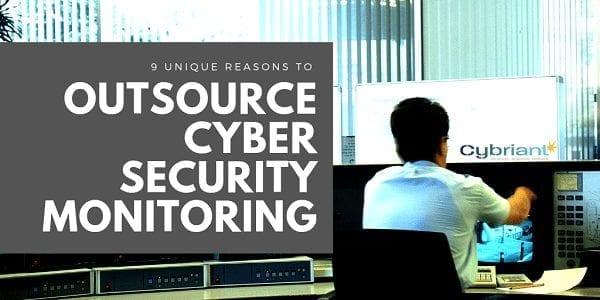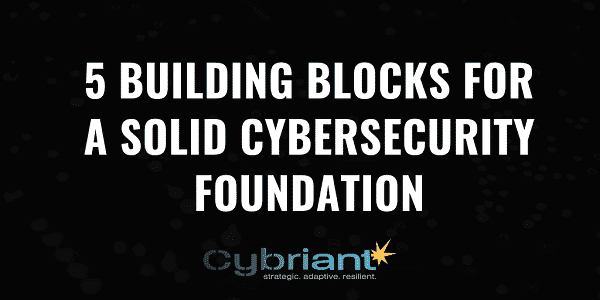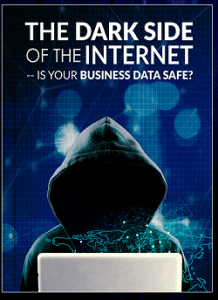
9 Unique Reasons to Outsource Cyber Security Monitoring
Keeping your business data safe should be the first and foremost concern for all businesses now. Here are 9 unique reasons to outsource cyber security monitoring to help make it a priority.
- Simplify Compliance Regulations
- Save Money
- 24/7 Access to Security Analysts
- Constantly Updated Threat Knowledge and Research
- Ability to Focus on Your Core Business
- Layered Protection from Cyber Threats
- Around the Clock Monitoring
- Reveal Unknown Vulnerabilities
- Reduce Cyber Security Skills Gap
Due to the rising security breaches in many companies, data security against unwanted intrusion is on every business owner’s mind.
No matter the size of your organization, IT security is the biggest challenge that organizations face. When it comes to medium or small enterprises the impact of security threats can be more severe.
Security hackers pose special threats to our computer network security. They are technology and networking experts and they use their insider information to grant themselves access to other people’s computer networks. They do it without permission.
Our modern computing environment is always an open one and hackers with great knowledge of systems and computing can easily get their hands on very sensitive information. This is a major problem for businesses now and they can solve it easily when you outsource cyber security monitoring.
Your important and sensitive information should be kept private and secured. One of the biggest risks to computers, mobiles, and every endpoint connected to the corporate network is identity theft or information theft. Many organizations have the tools necessary to manage cyber security in-house.
But for others, this can be an extremely expensive service to manage internally. Plus, if you get it wrong, you are at risk for exposure.
9 Unique Reasons to Outsource Cyber Security Monitoring
Managed cyber security monitoring is a service that monitors your network for threats through your SIEM.
When you outsource cyber security monitoring to Cybriant, our team will look at any suspicious activity and determine which level of alert this activity falls under.
When we identify a critical alert, we will open a ticket and follow a predefined escalation path informing the appropriate people in your organization with the information they need to take effective action.
Here are 9 reasons to outsource cyber security monitoring:
Simplify Compliance Regulations
HIPAA, SOC, PCI DSS, GDPR – no matter which compliance regulation you are required to follow, you likely are required to have a log of events that are happening on your network. Some organizations will purchase a SIEM tool, but not monitor or tune the tool properly.
By outsourcing the management of your SIEM, you’ll have expert specialists who can easily identify, solve, classify, and properly address the major security vulnerabilities. They can detect threats and can respond to cyber threats.
Not only that, if you go for outsourcing services you can expect to get important advice to protect your data or to resolve the issues of Cybersecurity with updated regulations and best standards like PCI DSS & GDPR.
Potential to Save Money
Businesses are often not able to afford the expense of an in-house cybersecurity monitoring team of professionals. Luckily, many organizations like Cybriant offer an affordable option for tiered cyber security services, which could result in savings.
By outsourcing cyber security services, you won’t need to hire full-time staff or don’t need to pay huge monthly salaries to them. Outsourcing services are cheaper services and can expect assured and skilled dedicated services from highly skilled professionals.
Access to Dedicated and Skilled Security Service Providers
Are you confident in your IT team to solve all your security issues? Most often, the people tasked with managed security are not cyber security specialists.
When you outsource cyber security monitoring, you’ll have a dedicated team of highly trained cyber professionals. When you work with Cybriant, we not only alert you to cyber threats, we work with your team to advise on how to alleviate the issues.
Having an outsourced service means you can trust the intricate details of your cyber exposure to dedicated and expert cyber security professionals, who are trained and skilled to solve such issues.
Constantly Updated Threat Knowledge and Research
Imagine working with a cyber security firm that has seen almost every potential cyber threat, malware, hack, etc. If they haven’t seen it, they are aware of it. When you outsource, not only will these security professionals monitor your security landscape properly, but they are also up-to-date with the current techniques, tactics, and methods that cybercriminals usually use.
We apply the most up-to-date and experienced knowledge to improve your security and detect all threats and vulnerabilities. This expertise ensures that the business has enough knowledge to away the malicious adversaries.
Focus More on Your Core Business
If your business is protected and safe and you have outsourced your cyber security monitoring, you can focus more on your core business. By focusing on your core business, your IT team will thrive while leaving the cyber security to the outsourced professionals. Proper IT support and skilled security outsourcing can help you put to use your resources where they will be most valuable.
While we certainly want our clients involved in the managed SIEM process, we work with you to determine your level of involvement. Whether it’s weekly meetings or quarterly updates, we let you take the lead and tell us how involved you would like your team to be.
Layered Protection
Security hackers are more powerful now and only a high level of cyber security can protect your important data. Outsourcing is effective because you are provided with layered protection.
Most outsourced cyber security monitoring companies offer extensive and more efficient security checks and the right methods that can even prevent human errors or internal employee mistakes; it can even cause a huge level of data breaches.
At Cybriant, we typically begin with a security assessment to determine any gaps in your security strategy. Our core business is 24/7 security monitoring with managed SIEM. Many core clients also add services like Managed EDR, and Patch and Vulnerability Management.
Around the Clock Monitoring Services
Protecting your organization’s information requires around-the-clock surveillance because cyber criminals are working 24/7 to find new ways to steal your data.
Monitoring and managing your cybersecurity requires 24/7/365 monitoring with more professionals. Outsourcing to cybersecurity with the specialist means you can achieve a higher level of monitoring services from a group of professionals, without spending money on training or hiring the in-house staff.
Reveal Unknown Vulnerabilities
It is quite risky to solely rely on your in-house staff for your cyber security monitoring.
No matter how reliable your team is, it always comes with a risk. If you work with independent partners for the validation processes and controls, including outsourcing cyber security monitoring, you can expect to get a more efficient service.
Independent service providers can easily uncover the weaknesses and vulnerabilities in different applications and systems that your IT team may not even know.
Reduce Cyber Security Skills Gap
The cyber security skills gap shortage is getting worse. Organizations are struggling to find properly training cyber security resources within an acceptable salary range.
You get an entire team of skilled cybersecurity professionals when you outsource cyber security monitoring – without having to worry about recruiting and training your staff. Due to the strict ethical principles laid down by the organizations, these professionals go the extra mile to ensure that there is no possibility of any compromise in the confidentiality of data.
Outsourcing for cybersecurity management is a brilliant idea because the professionals know better how to monitor your network and endpoints.
Start with an Assessment
Many organizations require an annual security assessment. Cybriant offers several levels of assessments and tests based on the needs of your organization.
At Cybriant, we offer assessments based on the NIST cybersecurity foundation. By having a foundation like NIST, you’ll be able to make all security decisions based on your framework.








